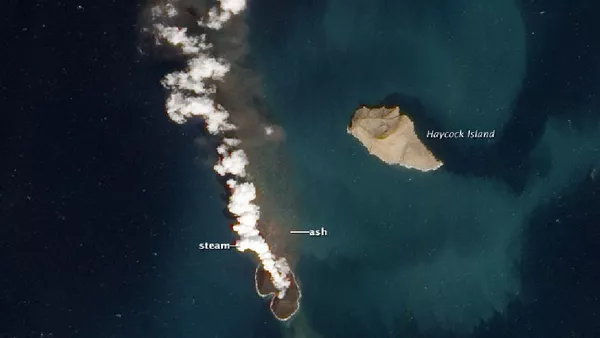In 2013, a new and larger island, known as Jadid, emerged nearby in an eruption that lasted 54 days.
Thanks to modern technology, the violent birth of the two islands was captured by satellites.
More vigorous eruption plume visible over Zubair islands today-unable to confirm with @NASA SO2 data due to #shutdown pic.twitter.com/FEBszw839Z
— Simon Carn (@simoncarn) 8 октября 2013
The islands appearing in a magmatically active zone is a relatively rare and still largely unstudied phenomenon, according to an international team of scientists from the King Abdullah University of Science and Technology in Saudi Arabia. Few of such islands have so far been observed.
New data helped researchers gain some insight into what happens to the newborn volcanic islands in the first several months. For instance, the high-resolution optical satellite images showed that two new members of the Zubair Archipelago family rapidly grew soon after they appeared.
Amazing: New Volcanic Island Formed In Red Sea 40 miles fm #Yemen coast near Saba Island http://t.co/cHFPQrJE
— Nasser Saidi (@Nasser_Saidi) 11 января 2012
"Coastal erosion significantly modified their shapes within months," Wenbin Xu, Joël Ruch and Sigurjón Jónsson said in an article published in Nature Communications on Tuesday. Battered by winds and waves, as well as eaten away by erosion the islands shrank over the last two years.
Continuing #volcano #eruption in Zubair islands on Sept 29 detected by MODIS pic.twitter.com/h5mHPMTrYq
— Simon Carn (@simoncarn) 29 сентября 2013
The other well-known island born from a seafloor eruption appeared off the coast of Iceland in the 1960s. Surtsey is still around today, giving evidence that Sholan and Jadid are unlikely to disappear any time soon.
Moreover, more islands are likely to emerge in the Zubair Archipelago since volcanic activity in the area is ongoing.


